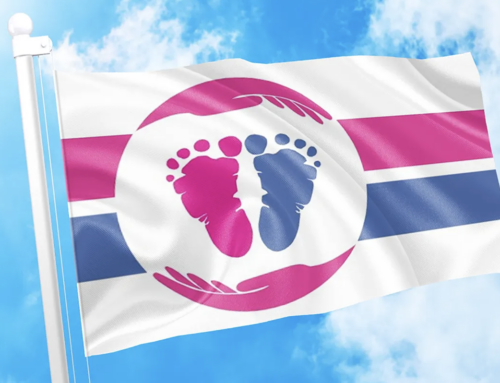Introduction by Winifrid Prestwich
Euthanasia, legalized under one form or another, is on the agenda in Canada.
During the past 18 months, Ontario has had a spate of bills, the first four of which were Private Members’ Bills; they appear to have died on the vine. The last two bills (The Substitute Decisions Act and the Consent to Treatment Act, May 27, 1991), were introduced by the NDP government. None of these six bills mentions that there are hidden threats to the patients.
By contrast, the Private Members’ Bill introduced in parliament in Ottawa, June 19, 1991, is more forthright and explicit.
Chris Axworthy, MP for Clark’s Crossing, Saskatchewan, was not abashed or elusive when he told the House of Commons that the purpose of his Euthanasia and Cessation to Treatment Act was “to legalize the administration of euthanasia under certain conditions.” His claim that his bill would give patients the right to refuse or accept treatment is unfounded. In common law, competent patients have always had the right.
The two Ontario Bills have passed second reading. They are intended to complement each other (though surprisingly there seem to be contradictions) and they follow the U.S. pattern of Living Will and substituted) judgment (power of attorney) models.
On the surface it seems rational and even compassionate to have this type of legislation for patients who cannot speak for themselves. But groups like the Hemlock Society know that people must be led, step b step. Derek Humphyrey of the Hemlock Society is quoted as saying: “We have to go stage by stage, with the living will, with the power of attorney, with withdrawal of this [food and water], we have to go stage by stage.”
Stage by stage the U.S. courts have moved towards accepting homicide under the euphemism of the patient’s ‘right to die.’ Thus the elderly and incompetent…are routinely starved to death – sentenced by ‘substituted judgment.’ For the record it should be stated that U.S. courts have demanded that pro-life doctors and hospitals kill their patients by starvation – all this at the insistence of the family.
In May 1989, Cardinal O’Connor predicted the ‘euthanasia…will dwarf the abortion phenomenon in magnitude, in numbers, in horrors,” and he added that ‘right to die’ laws would eventually require that doctors and hospitals kill their patients. (The courts have already done this.)
His final prediction applies to each of us: “Right to die laws will one day force the patients to prove that he or she has a right to live.
If we do not act to stop euthanasia, as night follows day, the handicapped, the senile, those with a terminal illness, will be exterminated. The life you save may be your own.
* * * *
The champions of euthanasia, both here and in the U.S., often point to the example of Holland where euthanasia is accepted by 76 per cent of the public, by the Royal Dutch Society of Medicine, by the health authorities and by the judiciary.
What can Canadians learn from Holland’s experience wit euthanasia?
The Winter 1991 issue of All About Issues, the official news magazine of the American Life League, carried an interview by Julie Grimstead of Dutch euthanasia opponent, Dr. Richard Fenigsen. Ms. Grimstead is the executive director of the Fargo, North Dakota based Centre for the Rights of the Terminally Ill.
Dr. Fenigsen, a cardiologist who resigned from the Royal Dutch Society of Medicine the day the Society’s board endorsed euthanasia, cannot say how many individuals are killed by euthanasia each year because in the great majority of cases, doctors do not record it as the cause of death.
However, from a recent questionnaire on the subject, the figure of 18,400 cases of active euthanasia per year – one in every sixth death in Holland – was obtained.
“Involuntary euthanasia has always been practiced along with voluntary from the beginning,” Dr. Fenigsen states, thus challenging euthanasia defenders who allege the practice gives the individual the choice to die.
To back up his claim, Dr. Fenigsen cites a recent study by F. Van Wijmen of the Medicolegal Group at Limburg University. Of the 299 questioned, Van Wijmen found that 123 of 41.1 per cent admitted they had performed euthanasia “without request of the patient.”
Dr. Fenigsen has no illusions about the pledge from North American defenders of legalized euthanasia that there won’t be abuses. He has first hand experience of the criminal scheming, the coercion and the negligence that is the corollary of euthanasia. But his denunciation goes much further than that, touching on the corrupt philosophy of the medical killing of the helpless; “euthanasia is itself a terrible abuse,” he says.
Holland lost the battle against those who re-defined human existence in terms of the ‘quality of life,’ Dr. Fenigsen states, explaining that the media have been “monopolized by the advocates of euthanasia.”
In Dr. Fenigsen’s view, it was this sustained pro-euthanasia campaign in the media which undermined the opposition of the Christian churches.
In 1972 for example, the vast majority of Protestant churches endorsed euthanasia. Although the Roman Catholic bishops issued a pastoral letter several years ago censuring the state for permitting euthanasia, Dr. Fenigsen is not aware of any Catholic groups organized against euthanasia.



